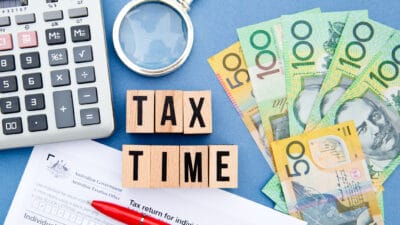Income investors looking for high yields have to navigate a difficult tightrope – determining whether high-yielding dividend stocks are safe ASX shares.
The market is, at the end of the day, a mechanism that investors use to price risk against reward. A company trading with a relatively high dividend yield is often doing so because investors are pricing in a risk that the yield isn't sustainable going forward.
Many novice dividend investors get caught out thinking that if they buy a dividend stock with a 9% dividend yield, they are buying a safe ASX share and are set to receive that yield year in and year out going forward. Imagine their dismay when the company announces in its next earnings that its dividends are getting cut or even suspended.
Remember, there's no such thing as a truly safe ASX share or a guaranteed dividend.
So today, let's talk about three ASX shares that are currently offering dividend yields of more than 5% today. We'll discuss whether these are safe ASX shares to buy for income investors, or yield traps that might lose you money going forward.
Are these 3 ASX dividend shares safe, or are they traps?
Woodside Energy Group Ltd (ASX: WDS)
At current pricing, ASX 200 energy stock Woodside is trading on a trailing dividend yield of 7.19%. That dividend yield comes fully franked too. So this is a potentially big chunk of change we're talking about here.
So can investors buy Woodside shares today and expect a 7% cash return on their investment every year? Probably not. Like miners and commodity shares, the profitability of any energy stock is almost entirely dependent on the price of crude oil (and gas if applicable).
If oil prices begin climbing over the coming weeks and months, Woodside might indeed match its previous payouts and remain a 7%-yielder. But if oil prices fall, investors can expect Woodside's dividends to fall just as quickly.
Indeed, the company's recently announced final dividend of 60 US cents per share represents a 58% reduction on last year's equivalent payout. If the interim dividend is cut by a similar amount later this year, Woodside won't be trading on a 7% yield for too long. Unless its share price drops, of course.
I'm not saying that investors won't enjoy meaningful dividend income from Woodside shares going forward. I just think that you can't buy this company's shares today with the expectation of a 7.19% yield every year.
ANZ Group Holdings Ltd (ASX: ANZ)
Next up is ASX 200 bank ANZ. Income investors have long loved ASX bank shares. And for good reason. Today, ANZ shares are displaying a trailing dividend yield of 5.92%. That comes with full franking credits to boot.
It wasn't that long ago that ANZ shares' dividend yield was above 6%, but a rising share price has remedied that at present.
So is ANZ a safe ASX share for income investors?
Well, this is also a tricky question to answer. The dividends from ASX banks tend to be a little cyclical too. Not as much as energy shares, mind you. But bank profits tend to rise and fall in line with what's happening in the broader economy.
Saying that, I think investors can buy ANZ shares today with a reasonable expectation of at least a 5.92% dividend yield going forward. The bank is well capitalised, with a relatively low (for a bank anyway) dividend payout ratio.
I also take note of what ASX broker Ord Minnet has projected when it comes to ANZ. As my Fool colleague covered this week, the broker has predicted modest dividend rises from ANZ shares over the next two financial years. If accurate, that bodes very well for income investors indeed.
WAM Capital Ltd (ASX: WAM)
Finally, let's talk about listed investment company (LIC) WAM Capital. WAM Capital is a favourite of many income investors due to its history of providing large and fully franked dividends to investors. At current pricing, WAM Capital shares are trading on a monstrous trailing dividend yield of 9.42% (fully franked).
However, this is the company that I hold the most scepticism on this list about being a safe ASX share for income investors.
For one, WAM Captial hasn't raised its dividend in six years. It has paid an annual 15.5 cents per share every year since 2018. Further, its most recent update tells us that the company has only 13 cents per share in its dividend profit reserve. And that's before the next payout (worth 7.75 cents per share) is due to be rolled out next month.
That doesn't look safe to me.
In addition, the WAM Capital share price has lost around 27% of its value over the past five years. All up, this is the exact opposite of what I would call a safe ASX share for income investors (or any investor).









